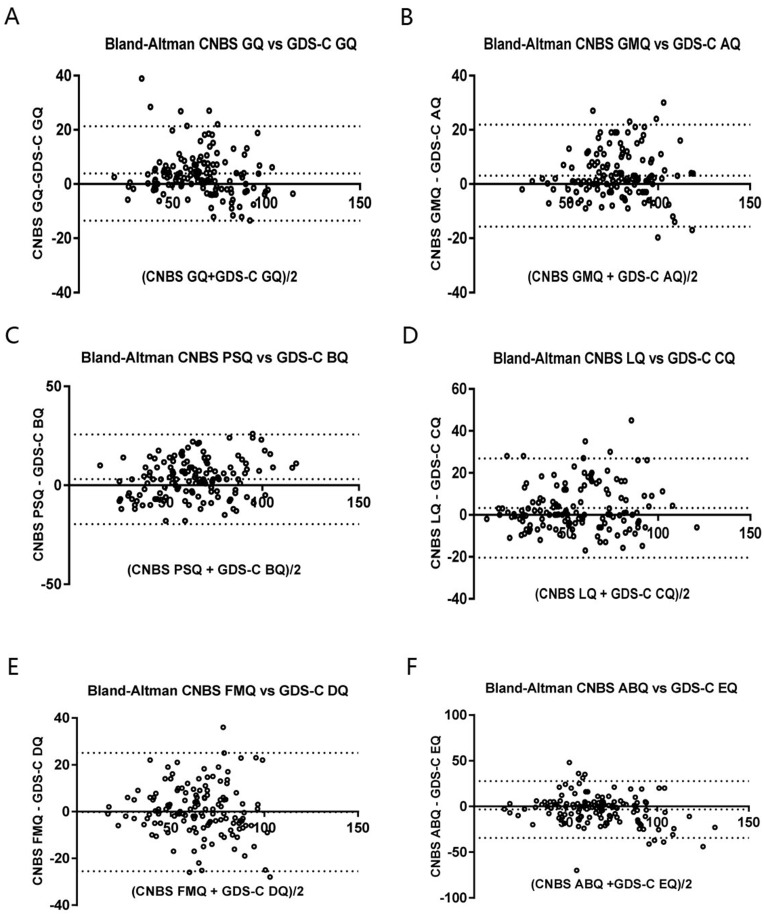Figure 2.
Bland-Altman plots generated to compare the average CNBS-R2016 and GDS-C quotients to their differences. The limits of agreement (95% CI, ie, mean ± 1.96 SDs) are shown by dotted lines. (A) Comparison of the CNBS-R2016 general quotient (GQ) and the GDS-C GQ. Mean difference: 3.9 (95% CI −13.5 to 21.3). (B) Comparison of the CNBS-R2016 Gross Motor quotient (GMQ) and the GDS-C subscale A quotient (AQ). Mean difference: 3.1 (95% CI −15.7 to 21.9). (C) Comparison of the CNBS-R2016 Personal-Social quotient (PSQ) and the GDS-C subscale B quotient (BQ). Mean difference: 3.1 (95% CI −19.6 to 25.7). (D) Comparison of the CNBS-R2016 Language quotient (LQ) and the GDS-C subscale C quotient (CQ). Mean difference: 3.3 (95% CI −20.4 to 26.9). (E) Comparison of the CNBS-R2016 Fine Motor quotient (FMQ) and the GDS-C subscale D quotient (DQ). Mean difference: −0.2 (95% CI −25.5 to 25.1). (F) Comparison of the CNBS-R2016 Adaptive Behavior quotient (ABQ) and the GDS-C subscale E quotient (EQ). Mean difference: −3.3 (95% CI −34.4 to 27.8).

